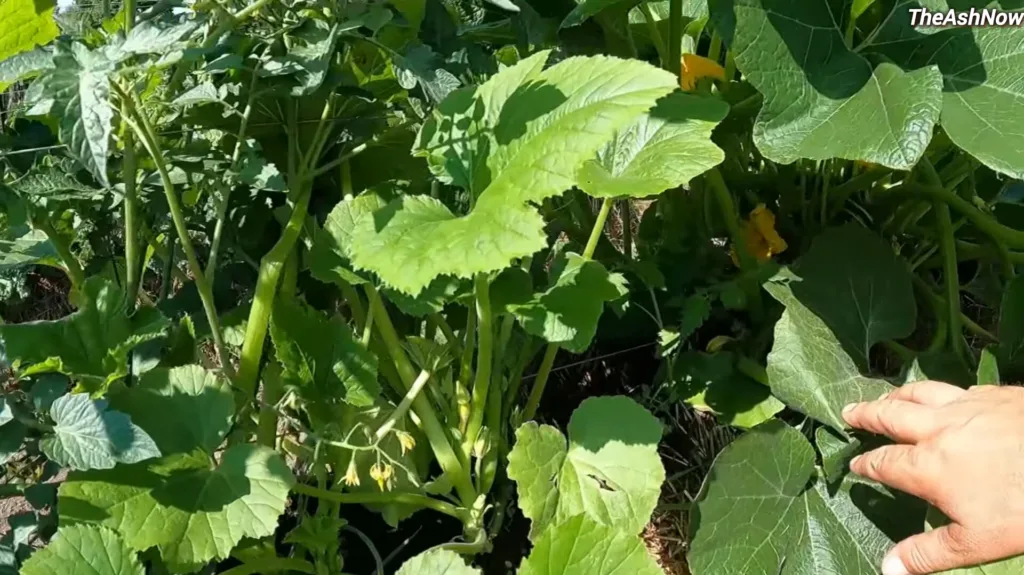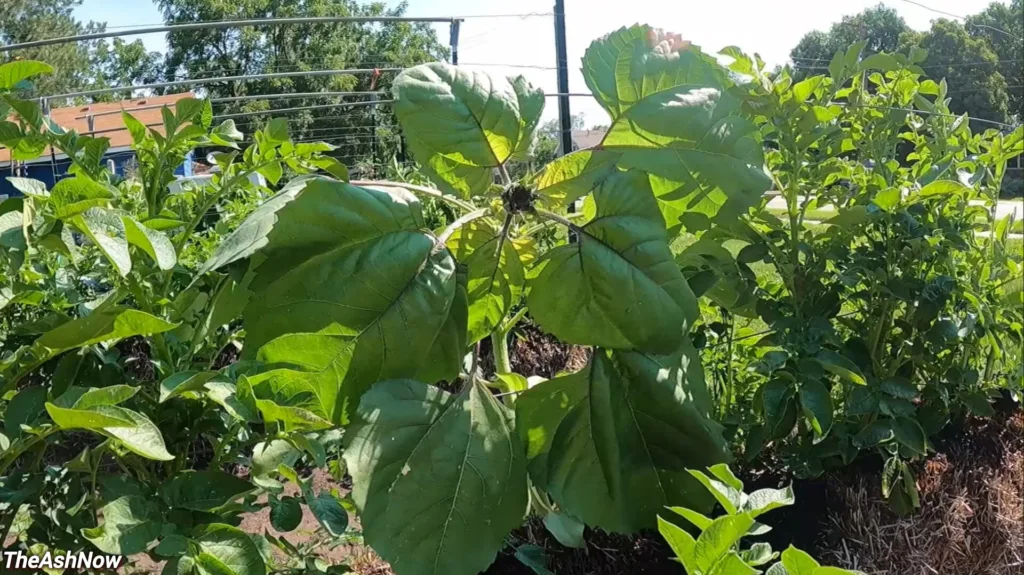What if your next garden didn’t require soil at all?
Sounds wild, right? But that’s exactly the magic of Straw Bale Gardening, a sustainable, low-maintenance, and wildly rewarding way to grow vegetables, herbs, and even flowers without touching the dirt. In 2025, this decades-old technique is making a massive comeback – especially in India’s USA, Canada, UK, and even urban spaces. Whether you’re a gardening enthusiast, a student exploring sustainability, or just someone who loves fresh tomatoes on their windowsill, straw bale gardening might be the game-changer you didn’t know you needed.
The 9 Best Companion Plants to Grow with Cucumbers for Increased Yields
Table of Contents

What is Straw Bale Gardening?
Straw bale gardening is the practice of planting directly into decomposing straw bales that act as both the container and the growing medium. Instead of using traditional garden beds or pots, you treat the bale to encourage internal composting. This breaks down the straw inside and creates a warm, nutrient-rich base where plants can thrive.
Think of it as a raised bed… but it composts itself!
Why is Straw Bale Gardening Trending in 2025?
With increasing awareness about sustainable practices and space-saving solutions, people are searching for ways to grow food at home without the high costs, backbreaking labor, or limited space. And straw bale gardening checks all those boxes:
- Low-maintenance & beginner-friendly
- Requires no tilling, digging, or weeding
- Perfect for small yards, patios, or balconies
- Ideal in poor soil conditions or urban areas
- Naturally composting and eco-friendly
According to a 2024 survey by the National Gardening Association, over 1.7 million new gardeners in North America started experimenting with straw bale gardening during the past year – a 35% jump since 2022.
“You don’t need great soil, you just need a bale, a bit of prep, and the willingness to get your hands dirty in a new way.” – Joel Karsten, author of “Straw Bale Gardens”
How to Start an Organic Vegetable Garden: A Step-by-Step Guide for Beginners 🌱

How Does Straw Bale Gardening Work? (Step-by-Step Guide)
1. Get Your Straw Bale
- Use straw, not hay. Straw contains fewer seeds and is cleaner.
- One bale typically costs between $5-$15 in the USA.
2. Condition the Bale (10-14 Days)
This is the most important step. You’ll need to:
- Water it daily for 3-4 days.
- On days 5-10, add a nitrogen-rich fertilizer (like blood meal or compost tea).
- Keep watering. The bale will heat up and begin decomposing from the inside.
3. Plant Your Seeds or Seedlings
- Create holes or pockets in the bale.
- Fill with potting mix if needed.
- Insert your plants or seeds.
4. Water and Watch It Grow
- Bales dry out faster than soil, so regular watering is key.
- Add stakes or cages for support if growing tomatoes, beans, etc.
Best Plants for Straw Bale Gardening
You can grow almost anything in a straw bale, but here are the favorites:
- Tomatoes
- Peppers
- Lettuce
- Zucchini
- Cucumbers
- Herbs (basil, parsley, cilantro)
- Beans
- Strawberries
Pro Tip: Avoid deep-root crops like carrots or potatoes in compact bales unless specially modified.
Straw Bale Gardening vs Traditional Gardening
| Feature | Straw Bale Gardening | Traditional Gardening |
|---|---|---|
| Soil Quality Needed | Not Required | High Importance |
| Weed Control | Minimal | Regular Weeding Needed |
| Accessibility | Raised Height – Easier to Reach | Ground-Level – Harder for Some |
| Startup Cost | Moderate (Bales & Fertilizer) | Low if soil is available |
| Portability | Semi-Mobile | Permanent Setup |
| Composting Benefits | Built-In | Requires Separate Compost System |
Real Stories: Why Gardeners Are Switching
Martha, 52, from Ohio:
“After back surgery, I couldn’t bend to tend my garden. Straw bales let me grow again – without pain! I had the best cucumbers of my life last summer.”
Karan, 29, Bangalore, India:
“Space is tight in the city. I grow cherry tomatoes and lettuce on my terrace using 3 bales. It’s like farming in the sky!”
Lena, 19, UK student:
“I turned my uni dorm balcony into a mini straw garden for my environmental science project. Ended up feeding half the building!”
Common Questions About Straw Bale Gardening
Is straw bale gardening safe?
Yes! Just make sure to get organic, untreated straw to avoid chemical residues.
Can you reuse the bales?
Bales are generally good for one season, but the leftover straw makes excellent compost or mulch for the next year.
Does it attract pests?
Surprisingly, no more than traditional gardens. In fact, the heat from decomposition can deter some pests.
How can I get started in 2025?
Local garden centers and even big-box stores like Home Depot and Lowe’s now offer straw bales. There are also great online resources and community groups dedicated to the method.
Environmental Impact & Sustainability
Straw bale gardening supports a circular economy. You’re using agricultural waste (straw) and turning it into food production. No need for plastic containers, synthetic soil amendments, or even large land plots.
A 2023 study by the University of Minnesota found that straw bale gardens used 70% less water than traditional plots and resulted in 40% fewer pests.
In a world where climate resilience is crucial, this method empowers people to grow locally, conserve resources, and reduce waste.
Tips for Success in Straw Bale Gardening
- Always use straw, not hay (to avoid weed seeds).
- Elevate bales off concrete with wood slats to allow drainage.
- Start small – even one bale can produce a bounty!
- Don’t skip conditioning – it’s the heart of the method.
- Join local or online straw bale gardening communities for support.
Final Thoughts: A Garden Revolution in a Bale
Straw bale gardening isn’t just a trend. It’s a movement – one rooted in sustainability, accessibility, and joy. Whether you’re trying to grow your own food, live more eco-consciously, or simply want to try something new, this method invites everyone to the gardening table.
So why not give it a shot? One straw bale. One tomato plant. One small step toward greener living.
Ready to transform your garden space in 2025? Start with just one bale and watch nature surprise you. Share your gardening journey on social using #StrawBaleRevolution and tag us @TheAshNow. Let’s grow something amazing together!
Here are the FAQs Related to this Article:
1. How can I save more money on a tight budget?
💡 Many Americans are facing rising living costs. They want real, practical tips on budgeting, reducing expenses, and building savings—even with a limited income.
2. What are the best side hustles to make money from home in 2025?
📈 With remote work culture still going strong, people want flexible, legit side hustle ideas that don’t require a large investment or technical expertise.
3. How do I stay healthy and fit without going to the gym?
🏋️♂️ Wellness and fitness remain a big deal—especially home workouts, mental health routines, and budget-friendly nutrition tips.
4. What’s the safest way to store my personal data online?
🔐 Data privacy is top of mind. With increasing cyber threats, people want advice on cloud storage, password safety, and digital detox practices.
5. How can I grow my own food at home easily?
🌱 A huge number of Americans are embracing sustainable living. Searches for “easy home gardening,” “container gardening,” and “grow vegetables without a backyard” have surged.
Credible Sources:
- National Gardening Association – https://garden.org
- University of Minnesota Extension – https://extension.umn.edu
- Joel Karsten, Straw Bale Gardens – https://strawbalegardens.com
- The Old Farmer’s Almanac – https://www.almanac.com
- Gardening Know How – https://www.gardeningknowhow.com
- Modern Farmer – https://modernfarmer.com
- Better Homes & Gardens – https://www.bhg.com
- Home Depot Gardening – https://www.homedepot.com
- Royal Horticultural Society (UK) – https://www.rhs.org.uk
- Lowe’s Garden Center – https://www.lowes.com

